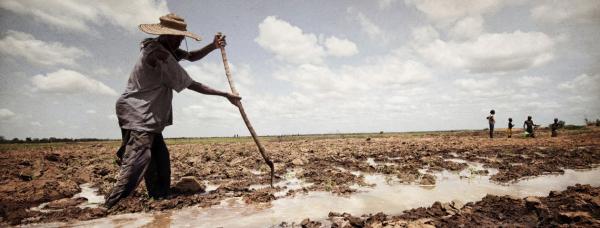ICRC call to action to strengthen climate action in conflict settings
By Tobias Schmitz
31 Oct 2022 by The Water Diplomat

At Cairo Water Week, the International Committee of the Red Cross presented an overview of the organisation’s perspective on the impact of conflict, climate change and environmental degradation on human security. According to the ICRC, 60% of the 20 countries most vulnerable and least ready to adapt to climate change are affected by an armed conflict. This insight relies on data drawn from the Notre Dame Global Adaptation Initiative (ND-GAIN) which summarises a country’s vulnerability to climate change and other global challenges in combination with its preparedness to improve resilience. Examples from the global ranking include Yemen (ranked at no. 171 of 182), Syria (ranked at no. 153) and Iraq (ranked at no. 120). The ICRC points out that people in fragile and conflict affected countries are among those most requiring support for climate action but are often left out.
In the field of water, for those living in marginal, arid lands which are the scene of conflict, access to water is critical and is a matter of survival. When food stops growing, the only coping strategy has been to migrate out of the region. As of May 2022, for instance, in Somalia, 90-% of the country faced drought, 1,4 million children are likely to suffer from malnutrition, crops are failing, water resources are depleted, livestock is lost, and some 270, 000 have left their homes in search of food and water. In urban areas, the destruction of water supply and treatment infrastructure in combination with the fact that citizens can be trapped by combat leads to the reliance on untreated water and the spread of disease. In Mariupol, Ukraine for example citizens took to melting snow or using water from radiators. In Syria, damage to water infrastructure has reduced supply by between 30-40%. There is a growing funding discrepancy between ‘stable’ countries and countries in conflict.
Water supply is affected by direct and indirect factors: conflict can cause direct damage to electricity supplies and/or water supply infrastructure or he death of technician and maintenance crew. Indirect factors include a ‘brain drain’ due to the out migration of skilled staff, the shortage of spare parts, or the shortage of funds with which to purchase them. In many areas, the lack of sufficient quantities of safely managed water makes the battle against an outbreak of disease almost impossible.
In terms of adaptation, at national level, efforts to adapt to climate change can be hampered by the focus on security considerations. At the local level, a response mechanism is to change or diversify livelihood sources or, in the absence of alternatives, simply to migrate out of the region. In these areas international support predominantly comes in the form of humanitarian aid. This aid was originally designed to be a short-term intervention but is increasingly turning to long term considerations.
As a result, the ICRC calls for the acknowledgement of human vulnerability to climate risks in areas of conflict and support in these areas for programmes aimed at increasing resilience. It calls for the global community to live up to its commitments to bolster climate action in vulnerable countries and to ensure that fit-for-purpose climate finance is available for such vulnerable conflict zones.
